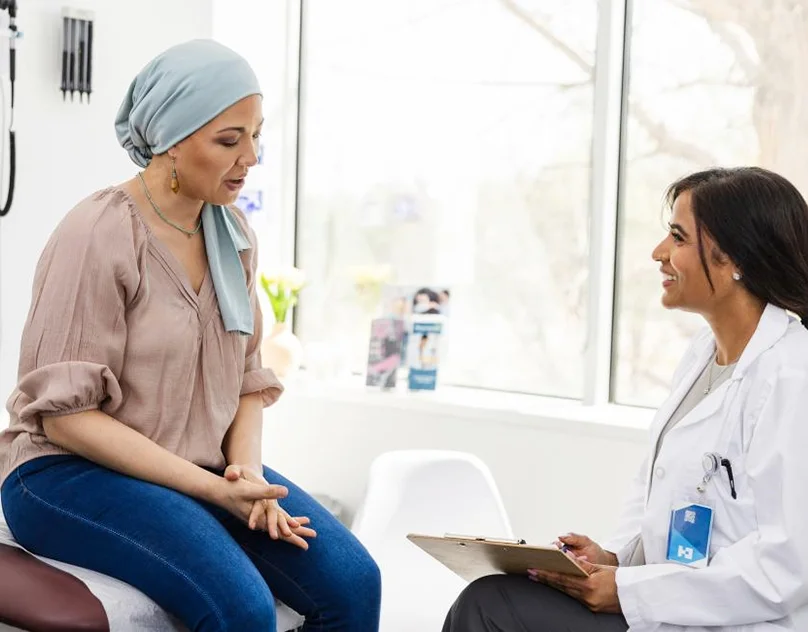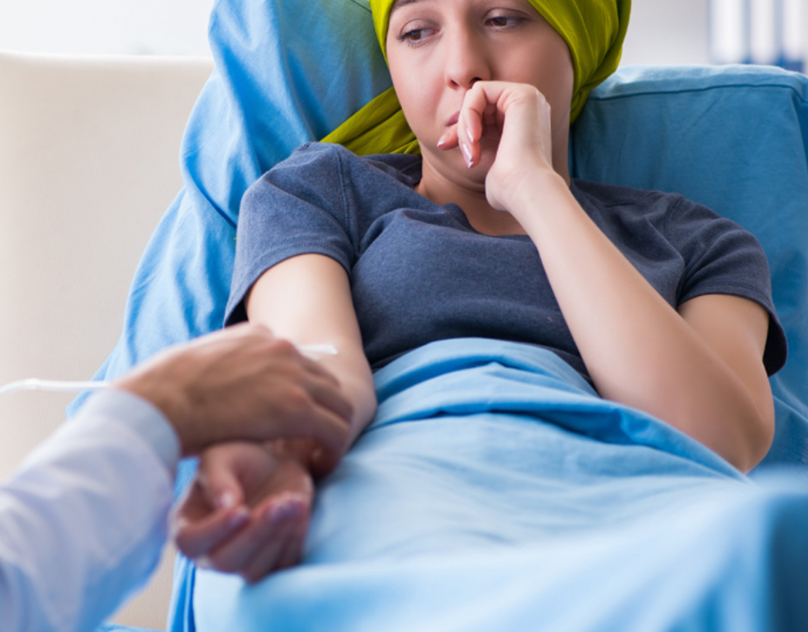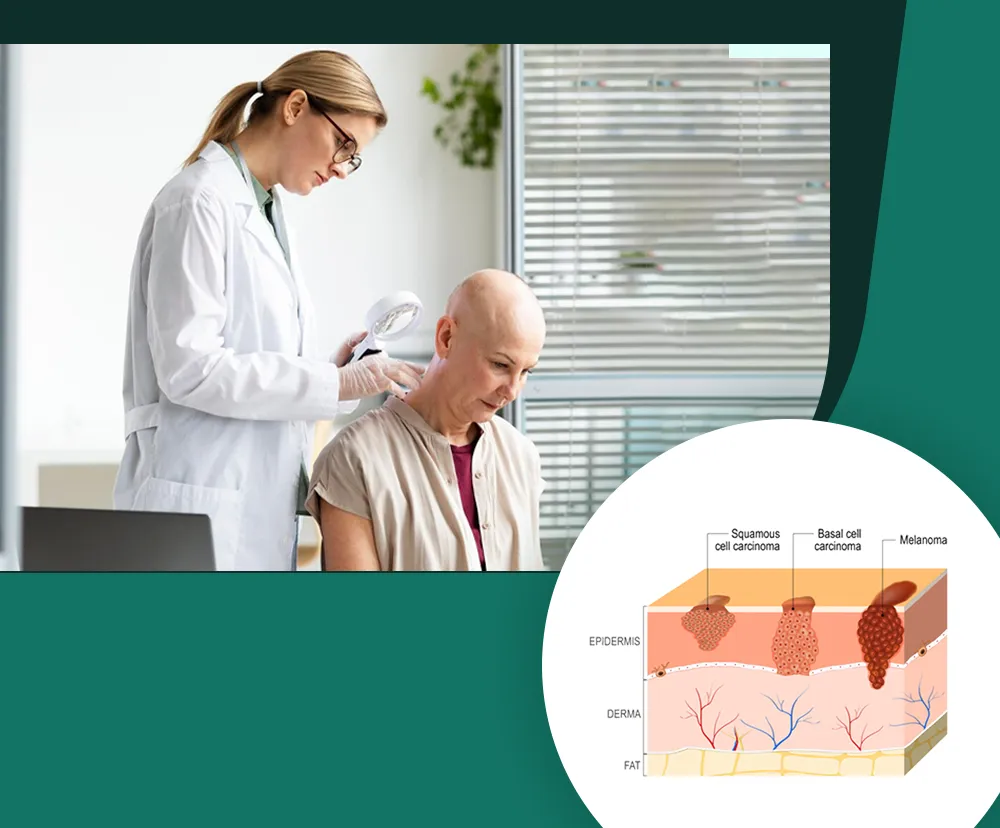At what stage is chemotherapy used?
At what stage is chemotherapy used?
Introduction
Cancer is a condition characterised by faster multiplication of a few colonies of cells. These can spread to other tissues that are closer to the original site or may remain at a single location. Based on the nature of cancers, cancers are grouped as either benign or malignant. In general, benign forms of cancers do not spread over.
Malignant cancers are known to spread to any part of your body. The typical signs of cancers are sores that remain unhealed for long, drop in blood cells – red cell or white cells, turning more vulnerable to infections, etc.
Cancers are best detected by a test called biopsy. It is done by taking a sample of a tissue from your body. It is then seen through a microscope to infer changes in cell count or other such mutations. Apart from biopsies, your treating doctor may also order blood tests and a few scans.
Treatment of cancers is done through several modes; these include a surgical intervention, radiations or chemotherapy. Surgeries are done to remove tissues or organs that are affected by cancerous cells. In case of radiation therapy, high-energy radiations are focused on the cancer site to kill harmful cells
So, what is chemotherapy?
Of the several ways to treat cancers, chemotherapy fares as a time-tested and proven approach. It involves the use of drugs of the anti-cancer genre to treat cancer. Medical research has identified several kinds of meds which are administered as part of chemotherapy. Drugs used for this cancer treatment have two broad and overarching intent – 1. Prolong the duration of your life and 2. Cure the underlying autoimmune condition.
Once a chemo-medication is administered, its key ingredients enter all parts of your system. Owing to it, drugs used under chemo qualify as offering systemic treatment of cancer. This approach is quite different from localised treatment plans involving radiations or surgery.
What are the types of chemotherapy
Chemotherapy treatments vary from one patient to another. Type of chemo treatment varies based on what drugs are used in the process. Regardless of the type of meds used, almost all of them aim to destroy cancer-causing cells or colonies of such cells.
Chemotherapy remains one of the earliest forms of treating cancers. Depending on your condition, chemo drugs may also be offered along with radiations as well as a surgery. In all, more than 135 meds have the clearance of the Food and Drug Administration (FDA) for use, as part of chemotherapy. You need to know FDA is a federal drug clearing body based in the US.
Treating physicians choose meds that are more suitable to your medical condition. They consider the stage at which the cancer is in, cancer type, age, extent to which your condition has spread – to name a few. Chemo drugs are classified according to their way of working. Of the various kinds of chemotherapy meds, widely used drugs are anti-metabolites, anti-cancer antibiotics, alkylating meds, etc.
Anti-metabolites
These drugs function on cancer-causing cells’ DNAs and alter the internal growth mechanisms. These meds are used for treating cancers in ovaries, intestines as well as breasts. You are likely to witness adverse reactions including signs of an infection – like a fever, runny nose or chills, drop in white blood cells, liver problems like inflammation or cirrhosis, ulcers, hair loss, etc.
Anti-cancer antibiotics
These drugs are not the same as those administered for treating infections. These drugs – derived off microorganisms – enable destroying of cancer-causing agents. These drugs especially uncoil the cell-level DNA of harmful cells, and help block them from growing as well as multiplying. These are widely prescribed for the treatment of colorectal cancer, prostate and lung cancer. Caveat: side effects may show up; these include a severe drop in appetite level, wounds or sores on oral parts, anemia and a few other blood-related ailments.
Alkylating drugs
These agents impair structures of harmful cells which cause cancers. If such cells are impaired, they do not divide and spread anymore. These drugs are widely administered for the treatment of multiple myeloma, lung cancers and breast cancer.
Beware of an overdose of alkylating agents; this is because these drugs may lead to impairment to the bone marrow. Other adverse effects include damage of gastric organs, hair loss, drop in red / white cells of blood, incidence of anaemia and other blood-specific conditions.
Plant-based alkaloid meds
Such drugs are known to have anti-tumour properties. Topoisomerase inhibiting meds are more popular in this genre and can aid in blocking cells from dividing. These are derived off plants and are widely taken for the treatment of intestinal cancer, pancreatic cancer, lung cancer and leukemia.
Topoisomerase-based drugs are sub-classified as type I as well as type II. These sub-classes are done with the way these meds work on cell-level enzymes of cancerous cells. Like other anti-tumor meds, plant-based alkaloid drugs may also cause a few discomforts and side effects. Key among them is decrease in platelet levels, indigestion, nausea and vomiting.
Chemotherapy process
Chemotherapy process makes drugs to work on cells that trigger autoimmune conditions. These meds engage in cycles or phases. No two meds used as part of chemotherapy function at the same cell-level cells or phases. The treating team of doctors know the way chemo–meds function. They use this knowledge to avoid further multiplication of harmful cells.
Meds administered for treating cancers cannot isolate fast-growth cellular colonies from the rest. Owing to this, healthier cells may also get impaired during chemo sittings. The main objective of each treatment cycle is to strike a fine balance between killing cancer cells and not-harming healthy cells.
You need not be too very worried about damages inflicted onto healthier cells; these cells will anyway come back to life. These cells are also known to recover from undesired outcomes of chemo meds. An equally encouraging thing is – cancer cells upon being impaired cannot come back to life. Once they are dead, there is no more room for cell-level division or spreading to other tissues / organs.
At what stage is chemotherapy used?
Chemotherapy is used at all major stages of cancers. At an earlier stage, chemo drugs are administered for a firm, curative purpose. However, if cancers have spread over to other parts / tissues, chemotherapy performs a palliative role.
At stage 1, chemotherapy is administered on a trial-mode after a surgery. At stage 2, chemotherapy either precedes or follows surgical interventions. In case of 3A – wherein tumours can be surgically removed – chemotherapy is combined with other modalities like surgeries and radiation therapies.
In case of stage 3A – which cannot be surgically removed – chemo-meds are administered either with radiation on a stand-alone mode or succeeded by immunotherapies. In stages 3B as well as 3C chemotherapy is done with an added dose of high-energy radiations. In some cases, this combination is succeeded by radio-sensitization therapies. In case of stage 4, chemotherapy is clubbed with targeted therapies. In case of a relapse, chemo-meds are followed-up with added chemo-sittings.
You also need to know of a few other situations when chemotherapy is recommended. Concurrent chemo – this involves chemo-drugs offered with one or more treatments like radiations. Such combined-treatment of radiations and chemotherapy is known as chemo-radiation.
In case of palliative chemo, drugs are administered to suppress typical signs and to extend your lifespan. This mode of chemo is considered when cancers have spread over to remote parts of your body and are not healable. Adjuvant chemo is rendered soon after first-line treatments. It helps eliminate cancerous-cells left untreated by such first-lines. Lastly, neoadjuvant chemo is offered to shrink cells causing cancers; it makes it easy to treat them
Chemotherapy side effects
Chemotherapy is likely to cause a few adverse effects in your system. The counterproductive outcomes change on a case-to-case basis; depending on the underlying med. Most common among chemo side effects include risks of bruising and bleeding, reduced immune strength, nerve pains, loss of hair, etc.
Most meds used as part of chemotherapy alter your immune cells. Such alterations cause skin problems like itchiness, infections on skins, rashes, etc. Oral sores are another side effect of chemo drugs. If these wounds become acute ones, you tend to bleed profusely. You are advised to stay away from a spicy diet, and never drink alcohol. Consult with a dentist to have a softer toothpaste and also gentler toothbrushes.
Chemo meds – not all of them though – can cause pain. These are of many kinds namely headache, bruising-based pains and nerve pains i.e., neuralgia. These discomforts tend to get worse when the underlying cancer cells start growing at a rapid rate. Your caregiving team will tell to continue with your chemotherapy sessions despite such discomforts.
Related Blogs :

What is chemotherapy treatment?
What is chemotherapy treatment? Introduction In this milieu, what is chemotherapy? Types of chemotherapy Chemotherapy process Chemotherapy side effects Introduction Cancers can show up in any site....


What is chemotherapy?
What is chemotherapy? Introduction What is chemotherapy? Types of chemotherapy Chemotherapy process Chemotherapy side effects Introduction Autoimmune conditions like cancers show up via rapid reproduction of cells...

Dr. Rajasekar is a cardiologist in Chennai, with extensive experience in the field. He completed his MBBS from Madurai Kamaraj University, followed by an MD in General Medicine and a DM in Cardiology from The Tamil Nadu Dr. M.G.R. Medical University (TNMGRMU).


